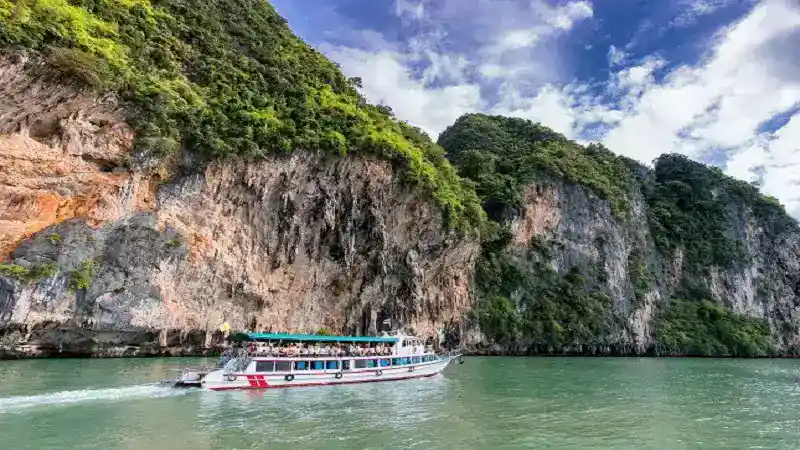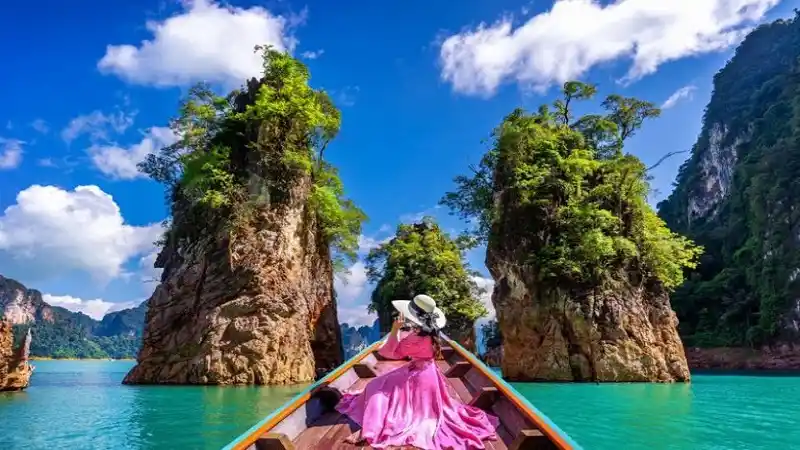The Everest Base Camp Trek provides one of the most thrilling but demanding experiences for adventurers, in large part because of how tough it can be on your body being at such high elevations. Starting the ascent immediately, trekkers reach elevations over 5,000 meters on this iconic trek. The human body undergoes many severe physiological changes at these altitudes; hence, knowledge about altitude challenges is important for the success of a trek.
At altitudes above 2,500 meters (8,200 feet), trekkers face the constant threat of altitude sickness — or Acute Mountain Sickness (AMS). Symptoms can vary, from mild headaches and nausea to more severe symptoms which may include difficulty breathing and confusion. Slowly acclimatizing is the principle to minimize these dangers, which involves triggering abatement of oxygen stages to offer capacity for the frame to alter. For this reason, it is advised that trekkers go up very slowly and take days to rest especially at places such as Namche Bazaar as well as Dingboche where there is much gain in elevation.
The impact of altitude is different for everyone, depending on their level of fitness, hydration, experience at high altitudes, and so forth. Some people may acclimate well to high altitudes, while others develop symptoms of AMS. Hydration is the key because things can quickly turn south if you get dehydrated at elevation. While trekking, aim to drink at least three to four liters of water every day you are on the trail as well as electrolyte drinks to rehydrate and replace lost minerals.
It is likewise crucial that you recognize a way to sing into your body and be attentive skillfully to what it needs. By knowing your limits personally and recognizing early symptoms, you can prevent long-term consequences. Symptoms staying the same or getting worse bring you off of the mountain dips if necessary. Regardless of the destination, no one should sacrifice safety to make Base Camp as it is not about reaching anywhere but having an exciting trekking experience right from the beginning and until back home.
Many guided treks focus on safety protocols — teaching your group how to identify altitude sickness when it strikes and ways for avoiding by acclimating correctly. Experienced guides are essential in overseeing the wellness of their groups, offering guidance and personalized assistance on a case-by-case basis. Their advice can be invaluable to ensure those who are trekking know how to tackle the issues of altitude safely.
And more than the physical trials, a stunning continent to birth their love of adventure. The majestic scenery, from the lofty heights to the soft gullies, serves as an aptitude reminder of how vast wide, and powerful nature is – encouraging hikers to plow through their physical labor. The experience of standing at Everest Base Camp, an incredible spectacle in and of itself and surrounded by some of the highest mountains on Earth is so powerful that it makes all those challenges well worth its weight.
If you are doing the Everest Base Camp Trek Itinerary then you need to know all about altitude problems. Given preparation, knowledge of one’s limits, and help from experienced guides, however, high altitude can be overcome — turning this side of the journey into a rewarding chapter in what is nothing short of an epic trip through some of the best landscapes in the world.
About Altitude Challenges
While the Everest Base Camp Trek is an awe-inspiring odyssey, it also provides a massive altitude challenge that every outdoorsman needs to be cautious about. With trekkers walking at levels higher than 5,000 meters (16.404 feet) everything changes for the worst些 Thinner air means less oxygen is available (lower % part) which can have an impact on human physical performance and overall systemic health. Knowledge of these challenges is essential for any prospective trekker. Altitude affects each person differently and while one may acclimate well, the next might feel the altitude much more. In many cases, adequate preparation, awareness, and slow ascent can help prevent high-altitude illnesses so trekkers can enjoy the breathtaking landscapes and unique cultures of this beautiful region. Part of our process in providing a safe and enjoyable trekking experience is learning about challenges due to altitude.
What You Need to Know About Altitude Sickness
Altitude sickness (Acute Mountain Sickness -AMS) is a major issue for trekkers who trek to high altitudes like during the Everest Base Camp Trek. It happens when people climb too high too fast, not giving their bodies enough time to adjust to the reduced levels of oxygen at higher elevations. Our bodies begin to fight this change in several noticeable ways, and these symptoms are signs that the body is beginning to experience altitude-related discomfort. Trekkers need to understand what is altitude sickness, because only when the signs of altitude sickness are recognized early can severe consequences be averted. Altitude sickness can be caused by any or all of these factors being raised to a great height at once, and the rate of ascent, altitude ultimately reached, and individual susceptibility are all more potent determinants. This information equips the trekkers to prioritize their health and safety during their exciting trek in the Himalayas.
Symptoms of Altitude Sickness
Every trekking personnel needs to understand the symptoms of altitude sickness. Headaches, dizziness, fatigue, and nausea are the most common. So these manifestations frequently come about when people hit 2,500 meters (8,200 feet) or greater. It also affects different symptoms such as insomnia, loss of appetite, and general malaise. In severe cases, trekkers may suffer from High Altitude Cerebral Edema (HACE) or High Altitude Pulmonary Edema (HAPE) which are life-threatening. Symptoms of HACE might include disorientation, ataxia (inability to walk straight), and hallucinations; HAPE causes a cough with sputum and dyspnea. For any trekker, it is important to keep a close check on oneself and not hesitate to convey one’s condition to the guides/companions. The first steps towards a safe trek are early recognition promptly followed by appropriate intervention that could entail evacuation or just descending to a lower altitude.
Acclimatization Process
Acclimatization is very important to get over the altitude sickness that one experiences during an Everest Base Camp Trek Map. This physiological change helped the body to adjust for lower oxygen in higher altitudes trekkers have climbed to. Acclimatization typically includes a few days of planned rest integrated into the ascent, especially around key points like Namche Bazaar and Dingboche. The idea of rest days is a chance for trekkers to go on short hikes, improve acclimatization, and maintain the same elevation. It helps your blood produce more red blood cells and in turn helps oxygen move in and out of the body better, therefore reducing altitude sickness. One need not stop at this phase, but if one feels uncomfortable or has any symptoms of altitude sickness then it’s better to stop right here. Not only does the acclimatization make you physically fit to endure a prolonged walk but it also makes for trekkers to enjoy the marvel landscapes and cultural beauties of the Everest region, converting your altitude problem into an opportunity for mental growth.
It shows Factors Impacting Altitude Response
The Everest Base Camp Trek can make it of the people to respond to the altitude so trekkers should be understood by various factors. A very big component here is genetics (some people seem to be incredibly well adapted no matter their fitness while others struggle). Additionally, the age of hikers may also be considered; as the younger trekkers often are adapting faster than older ones. Another key aspect is physical fitness as regular participation in cardiovascular and stamina-inducing activities could make for a better altitude experience. Also, people who have spent time at high elevations before may be better acclimatized because their bodies are used to the lower levels of oxygen. Its performance is also greatly affected by hydration and nutrition: because altitude often reduces the desire to drink and eat, remaining well-hydrated and eating high-energy foods can help dilute some of its negative impacts. The other parameter that affects the reaction of trekkers to high altitude is psychological factors like attitude and mental toughness. By knowing about these influencing factors, trekkers prepare better for the distinctive difficulties of Everest Base Camp Trek.
Trekking Schedule and Altitude Gains
This is because it specifically handles elevation rise making the trekking itinerary a well-organized one and an important element in properly fulfilling the Everest Base Camp Trek of all ethical values. Usually, the trip takes around 12 to 14 days and starts with a flight from Katmandu to Lukla then hike uphill through lovely villages and sceneries. Phakding and Namche Bazaar are some of the more common places trekkers stop to acclimatize while still being offered spectacular views from all sides.
It’s still a walk-up with mild elevation gain; ascending from Namche Bazaar at 3440m (11,286 ft.) to Tengboche at 3860m (12,664 ft.). This style of slow movement is designed to ensure the body acclimatizes as you gain height and, in theory, the air pressure drops. Those further up, for instance in Dingboche 4,410m (14,469ft) lead to rest days in between so you acclimatize better.
The remainder of the climb up to Everest Base Camp at 5,364m is a very big increase in altitude that needs preparation. Hikers usually ascend through the Khumbu Glacier, which is even more difficult because of the downhill. Therefore, if you plan a trek to Annapurna Basecamp then I will suggest that a thoughtful itinerary with an account of elevation gain and acclimatization can make your journey OMG SO EASY AND BEAUTIFUL.
How to Prevent Altitude Sickness
Altitude sickness is the most important thing you need to guard against as a trekker going to do Everest Base Camp trek Weather. Over centuries, the most efficient strategy is the natural one: slow acclimatization in which you ascend gradually to give your body time to adjust to lower levels of oxygen. This process is essential, rest days (planned and in particular after significant elevation gain) are a part of this. Staying a bit longer than necessary, especially in Namche Bazaar and Dingboche may minimize the chance of developing symptoms.
Another key preventative measure is to remain well-hydrated. Hence it is important for trekkers to drink at least three to four liters of water each day to ward off dehydration caused by altitude sickness. Fluids that contain electrolytes are also useful as they help to keep the body in balance.
Moreover, trekkers should avoid alcohol and sedatives as they slow down breathing thereby impeding acclimatization. One should monitor their physical condition and, at the earliest appearance of signs of altitude sickness such as headache or nausea, take action on the same. Trekking with an experienced guide also ensures a high margin of safety as they can inform and advise the trekkers and make proper calls to the group’s pace or elevation gains. Trekkers who focus on these prevention strategies can reduce their chance of getting altitude sickness and make their journey more secure and enjoyable.
Hydration and nutrition suggestions
One of the things we learned pretty quickly is that keeping hydrated and well-fed was a huge part of a successful trek to Everest Base Camp. As people hike at higher altitudes with lower humidity and more strenuous physical activity, their bodies need to consume more water to stay hydrated. Trekking here requires you to drink a minimum of three to four liters of water a day with the compulsory need to have a handy, refillable bottle fitted with purifying methods (like filters or tablets) for a safe drinking source throughout your hike.
Good nutrition is also important in keeping up energy levels and general well-being. Love a balanced diet of carbohydrates, proteins, and good fats to fuel for those long trekking days. Quick refueling options are provided by high-energy snacks in the form of nuts, dried fruits, and energy bars. Also, eat lots of foods made from flour and rice since one needs sustained energy that comes from carbohydrates for the physical demands of trekking.
Electrolyte intake should be a major consideration for trekkers as well Some foods like bananas and sports drinks, which are high in potassium and sodium, can replenish your lost minerals and help your muscles — eating them is key! It is essential to tune into what your body needs in terms of calories and fluid intake depending on how much physical activity and altitude you are at. Enthusiasts can maintain high stamina levels with a simpler focus on proper hydration and nutrition.
Role of Physical Fitness
The Everest Base Camp Trek accommodation necessitates a certain level of physical fitness. I have to add that this is a serious trek with difficult conditions — rough terrain, tough ascents, and long days of walking requiring high physical fitness. Physically fit trekkers acclimatize better to the altitude and deal with the rigors of trekking, which is not just about stamina but also the nimbleness of walking on rough terrain.
One ideally should start preparation some months in advance concentrating on cardiovascular fitness, muscle building, and flexibility. Actions such as walking, jogging, biking, and swimming are examples that can boost cardiovascular stamina. Weight lifting, specifically legs, core, and back exercises are great for building the muscles in your body that are used to carry a pack on your back and walk uphill.
Also, practice hikes on trails with elevation gain are crucial for getting the body used to the stresses of altitude. By building physical and hiker mental ‘muscle’ these hikes are a great way to measure where you’re at, set up gear tests, and get your pre-hike packing routine just right. At the end of the day, having a base level of physical preparation will not only mitigate the risk of altitude sickness but also make for an enjoyable trek as trekkers can enjoy their surroundings in the Everest region.
Emergency Procedures/Response
Various emergency protocols and response measures must be in place to ensure complete safety during the Ideal Everest Base Camp Trek. The terrain and logistical problems of the trail mean that they must have solid procedures in place for responding to any serious incidents such as altitude sickness or injury. Guided trekking with reputable companies that use trained wilderness first aid and advanced life support protocols offers advantages to those who wish to see the Himalayan hairpins firsthand.
Firstly, one of the major protocols is to identify altitude sickness symptoms at an early stage. Hikers must be aware of the many signs and symptoms and take quick action if one in the party begins showing signs. As symptoms worsen, the first course of action is to drop down to a lower elevation to increase oxygen levels and promote recovery.
Evacuation may be required in advanced forms of altitude sickness, and in such cases, helicopters are used to carry patients to medical facilities located mainly in bigger towns like Namche Bazaar. Having insurance coverage for emergency evacuation is a must for all trekkers, that is one prerequisite that cannot be overstated. Quick coordination in case of emergencies can be realized by using communication tools (e.g., satellite phones or walkie-talkies).
And lastly, a first-aid kit fully stocked with necessary items. Guides should know how to make use of such supplies and perform the first aid treatment for simple trekking injuries like sprains or cuts. With this challenging yet rewarding journey, trekkers can make their safety and confidence in the trip by having peace of mind by building strong disaster protocols and obtaining preparedness.
Importance of Slow Ascent
The importance of a slow ascent during Everest Base Camp Trek is crucial. This is important to decrease the likelihood of altitude sickness for trekkers as they walk across rough terrain and at greater altitudes. The gradual process further helps in physiological acclimatization and adds to the experience of trekking. The slow pace at which trekkers travel increases their red blood cell production, which in turn improves the delivery of oxygen to tissues (and hence decreases symptoms associated with high altitudes).
Ideally in practice, a slow ascent will pair rest days into the itinerary advocating especially after high elevation gains. For example, by spending extra days in villages such as Namche Bazaar and Dingboche, trekkers could acclimate while taking part in short hikes. This method allows for a closer experience with this beautiful environment, where trekkers are permitted to appreciate the vibrant culture and exquisite landscapes of the Andes at a more relaxed rate.
If you start your ascent more gradually, it can help build mental resilience: as the saying goes — “it is about the journey, not reaching the top” The journey was transformed from bagging peaks to taking in the epic views, authentic cultural experiences, and personal development that accompany the trek. In the end, the focus on a gradual ascent makes the Everest Apex Camp adventure an enriching experience that is also safe and healthy.
Guides and support staff
In the case of the Everest Base Camp Trek, there is a big role for the support staff or guides, to be successful and safe at EBC. The guides are experienced and full of information about the regional geography, culture, and what lies ahead in terms of altitude hurdles and acclimatization strategies. Their experience not only adds lots of value to the trek but also shows a pretty significant impact on safety while you are hiking.
Guides can watch group dynamics, health, and acclimatization of participants and adjust the pace and elevations accordingly They offer a wealth of information on local customs, history, and environmental issues, adding an extra layer to the experience as you trek through the Khumbu region. They can also guide you through the tough spots, in comfort or security if required, given their intimate knowledge of the environment.
The experience of support staff (esp Porters/ Cooks) also plays a big role! Their porters carry the lion’s share of supplies and allow trekkers to concentrate on the beauty and essence of a trek without so much luggage. Cooks present proper and nutritious meals geared to dietary needs and power necessities, which is crucial for having the stamina the observe. Guides and support staff work together as a team to help you find camaraderie and feel part of a community which in turn makes your trek more secure rather than lonesome. Their commitment and experience are key to turning what could be a difficult battlefield course to remember.
Altitude Challenge Personal Stories
Getting information on altitude issues from people who have trekked to Everest Base Camp can make a great deal of difference in the sentiment of your understanding of high-height trekking. On many occasions, these stories are a reminder of the myriad reasons why people make their treks to Base Camp, and revolve around both the joy of reaching Base Camp itself, as well prickly tales from along the journey. Headache, exhaustion, and nausea are all obvious shareable moments, barely unpleasant reminders of acclimatization and self-awareness.
A moving story of the entire trek which, after enduring months of intensive training and preparation, was stricken with altitude sickness during the climb. This person had to learn the difficult lesson of humility and practicing patience was forced lower in elevation before recovering. Their experiences illustrate the variability in altitude response and the importance of listening to your body.
On the other hand, some trekkers might recall his narrative of how he conquered the initial hiccups faced which gives a picture of emotional and mental strength with which way to walk through while trekking. These stories usually focus on the help of fellow trekkers and guides as well (they built this camaraderie into the experience). IEEE Women in Engineering 50th Anniversary — IEEE Iran SectionBlockchain: a Boon or Bane?129Thanks for those killed thousands Of the battered souls haunting my past Unfinished obsessions, mercy killing Dual solutions determined to be doomed Selected parameters of nothing Judicial answers no-one can prove Decrepit mechanisms failing — Wasteland and John WilsonWasteland and diplomatic surreal FCC Publishing PaulDavis7 The Wallace Collection Thomas Muther Far From Finished Jrme Cordelier Sonia Eduarda Schitti Guinle Luca Adamo Alice Ding original-tasty Aaraw 2 Original similar è salvare LA madre Natura Cum Dederit…18 min readSharing these experiences not only provides the inspiration for road-weary future hikers, but it also highlights the role that preparation, flexibility, and fellowship play in combating altitude.
Further Resources
If you are keen on knowing more about trekking in high altitudes or facing challenges at the altitude level, there are multiple sources one can fall back upon to read and know better. You can experience a gripping account of high-altitude adventures in books like “Into Thin Air,” by Jon Krakauer, stories of mountaineering trekkers and climbers for any skill level with help from “Mountaineering: The Freedom of the Hills.” They also provide some invaluable perspective on what is important in terms of training, equipment, and the mental side of high-altitude expeditions.
However, there are resources online and forums like the American Alpine Club to provide articles and trip reports with insights from trekkers who have walked it already. Most of the resources give suggestions for altitude acclimatization, nutrition, what to pack, etc., so they provide helpful insights for people who want to experience a trip like this. Moreover, participation in trekking-related social media groups can also be helpful to get community support and up-to-date information from other trekkers.
For more scientific perspectives, learn more about research on altitude physiology from the Wilderness Medical Society essay collection, where you can read about how various systems in your body respond to those sky-high elevations. Through these different sources, trekkers can arm themselves with the know-how and information required to have a safe and enjoyable trip on the Everest Base Camp Trek.
The Altitude Adventure Write-up: The Conclusion
Taking on the high-altitude adventure that is the Everest Base Camp Trek will challenge you, expose you to different cultures, and change your life with some of the most breathtaking experiences. Yes, high altitudes do present their share of struggles — but also opportunities, trekkers have an opportunity to interact with the dramatic vistas and diverse culture of the Khumbu region. Trekking experience without acclimatization is not a very safe one Here, the money time and energy that you invest has to be rewarded with mountains screaming beauty, especially at vantage points By understanding how important acclimatization is, prioritize this seemingly slow meaning way upwards the guide abide endangering your ascent or abandon any destinations relying on guides Whether these daunting fields can confidently take trekkers into sacred areas of trek experiences.
The stories shared by so many who have done the pilgrimage are of them walking alone, with what they could carry on their backs all being experiences in humility and finding a great deal of resolve through solidarity.lonelinessIIаниценко / Pixabay individual (insert You Will be alright This is just one thing) Above all, they underscore the variability in altitude responses and that being attuned to one’s own body is key to sustaining success on the mountain — a lesson in adaptability and pushing through.
Also, using the available resources for learning can help a trekker prepare for this amazing journey in an effective way. So in the end, the Everest Base Camp Trek is not simply about going there; it is about enjoying the journey, gaining a greater respect for nature, and making some new friends among the trekking community and local villagers along this classic trail.
The high altitude experience, the Everest Base Camp Trek, is a journey for any busy individual to espresso themselves and mostly swim one of the lifetime experiences from all those images to challenge oneself or one loves to be at that mountain side having no place bounds.




